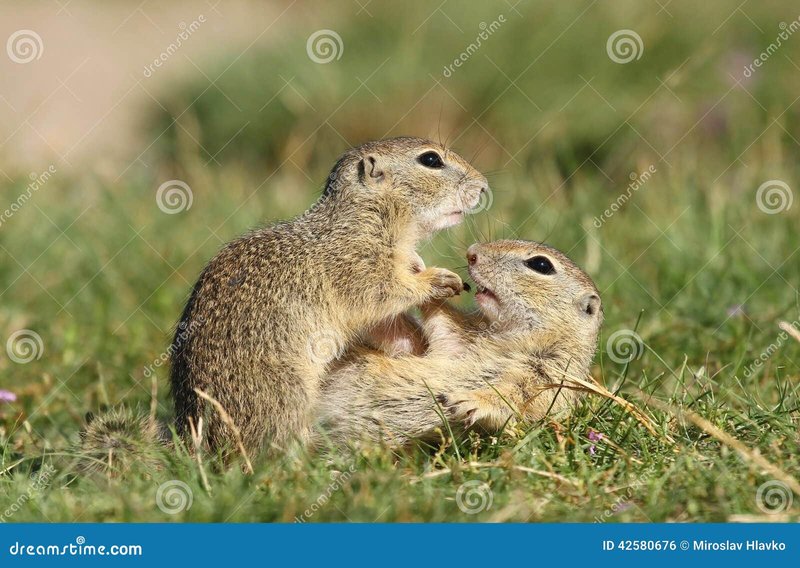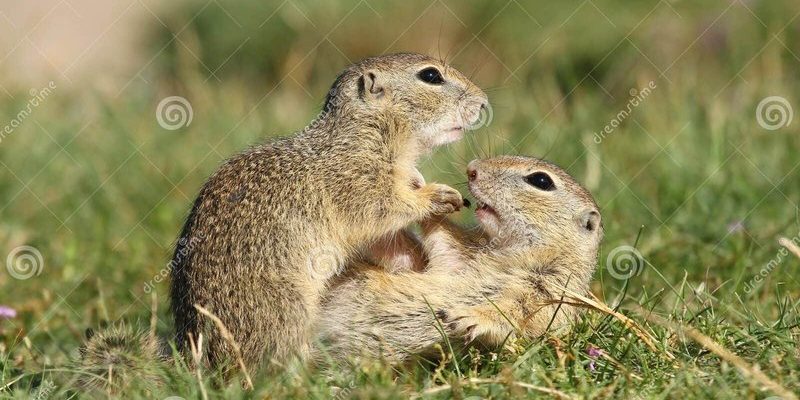
Here’s the thing: ground squirrels live in colonies, creating a bustling community that plays a significant role in how they rear their offspring. Imagine living in a cozy neighborhood, where everyone watches out for each other’s kids. The mothers, known as *dams*, have a lot of responsibilities. They prepare for the arrival of their babies by choosing the right burrow and gathering food. This article will explore the various stages of their nurturing process, from maternity to independence, and give you a deeper understanding of these charming little mammals.
The Mating Season and Nest Preparation
Ground squirrels typically mate in early spring, right after hibernation ends. The males emerge earlier from their burrows to find mates and establish their territory. During this time, males engage in a bit of competition, showcasing their strength and agility to attract females. Once they successfully mate, the real work begins for the female.
After mating, the female ground squirrel prepares a safe nest for her young. This is no simple task; she needs to find a hidden, secure spot to protect her future babies. Usually, she digs deeper into her burrow, creating a cozy chamber lined with grass and fur. This nest acts as a warm and safe haven for the young squirrels, keeping them sheltered from predators and harsh weather.
Interestingly, the female will also gather food to ensure she has enough energy during her pregnancy. She knows that her babies will depend on her, so she meticulously stocks up on seeds and greens. This preparation reflects her strong maternal instincts, as she prioritizes both her and her future young’s needs.
The Arrival of the Babies
Once the nest is ready, the female typically gives birth to a litter of 4 to 8 baby squirrels. These little ones are born blind and hairless, completely reliant on their mother for warmth and nourishment. During the first few weeks, the babies spend most of their time in the burrow, growing and developing under their mother’s watchful eye.
You might be wondering how the mother cares for her newborns. Ground squirrel mothers are incredibly attentive; they alternate between nursing and caring for the nest. She’ll leave the burrow occasionally to forage for food, but she always returns quickly to check on her babies. It’s crucial for her to provide both warmth and milk to the pups, which helps them gain strength.
As the babies grow, they develop quickly. By around three weeks old, they start to open their eyes and even venture out of the nest. This gradual exposure to the outside world is essential for their development. It allows them to experience their environment, learn about potential dangers, and begin their journey to independence.
Teaching Survival Skills
As the young squirrels mature, their mother plays a vital role in teaching them essential survival skills. Ground squirrel families are quite interactive; you can often see mothers leading their youngsters around the burrow. They show them how to dig, forage, and recognize threats, such as hawks or snakes.
One of the most critical lessons is foraging for food. The mother will take her young to areas with ample food sources, where they can learn to identify different plants and seeds. This education is vital because, without the right skills, young squirrels will struggle to survive on their own. Honestly, it’s like a mini boot camp for these little critters!
Additionally, the mother teaches her young about communication. Ground squirrels are social animals, and they use a variety of chirps and whistles to alert each other about potential dangers. The babies learn to vocalize at an early age, which helps them bond with their mother and the rest of the colony.
Weaning and Independence
After a few weeks of intensive care, the babies begin to wean off their mother’s milk and start eating solid food. This transition is crucial as it helps them gain independence while still relying on their mother for guidance. Typically, weaning starts around six weeks of age, and by the time they’re 8 to 10 weeks old, they’re ready to venture further from the burrow.
During this time, the mother gradually reduces her feeding and starts encouraging the babies to explore more. She’ll call them back to the burrow if she senses danger, illustrating her protective nature. It’s a bittersweet moment for the mother; she has nurtured them from birth, and now, it’s time for them to start their own lives.
Independence is a gradual process, and the young squirrels will often stay close to the colony for a while, learning to navigate the world around them. They’ll continue to rely on the social structure of their colony for support, even after they’ve become fully independent.
The Role of the Colony in Raising Young
Ground squirrels thrive in colonies, and this social structure significantly impacts how they raise their young. Each member plays a role in ensuring the safety and well-being of the community. When it comes to caring for the young, it’s not just the mother who contributes. Other adult squirrels often help watch over the babies, alerting them to danger or leading them to resources.
This communal approach is a key survival strategy. With multiple adults focused on keeping an eye on the young ones, individual mothers can focus on feeding and caring for their pups without constant worry. This sense of community fosters a safe environment, allowing the young squirrels to grow up with support from various members of the colony.
In addition, the social interactions among the squirrels help the young ones learn about hierarchy, cooperation, and communication. As they play and interact with peers, they develop crucial social skills necessary for their adult lives.
Challenges of Raising Young in the Wild
Despite their natural instincts and community support, raising young in the wild is not without its challenges. Ground squirrel mothers face numerous predators, from hawks to snakes, that threaten their young. These dangers require constant vigilance and quick thinking from the mother.
Weather can also be a significant challenge. Heavy rains or extreme heat can pose risks to the young. If their burrow becomes flooded or too warm, the mother must quickly decide how best to protect her pups, sometimes moving them to a new location.
Food scarcity is another critical issue. During certain seasons, food may become limited, making it harder for mothers to find enough nourishment for themselves and their young. This is why their preparation before giving birth is so crucial. A well-stocked nest can make all the difference in ensuring those babies have the best chance at survival.
Raising young in the wild is no small feat, and ground squirrels illustrate this beautifully. From intelligent nest preparation and vigilant mothering to the supportive community around them, these animals have adapted remarkable strategies for nurturing their young. As we’ve seen, their journey from cute, blind pups to independent squirrels is filled with challenges and triumphs.
These small creatures might not have the grandeur of larger animals, but their parenting methods can teach us a lot about resilience, community, and the cycles of life. So, the next time you spot a ground squirrel, take a moment to appreciate the incredible story behind them. It’s not just about survival; it’s about family and the bonds that help them thrive.

